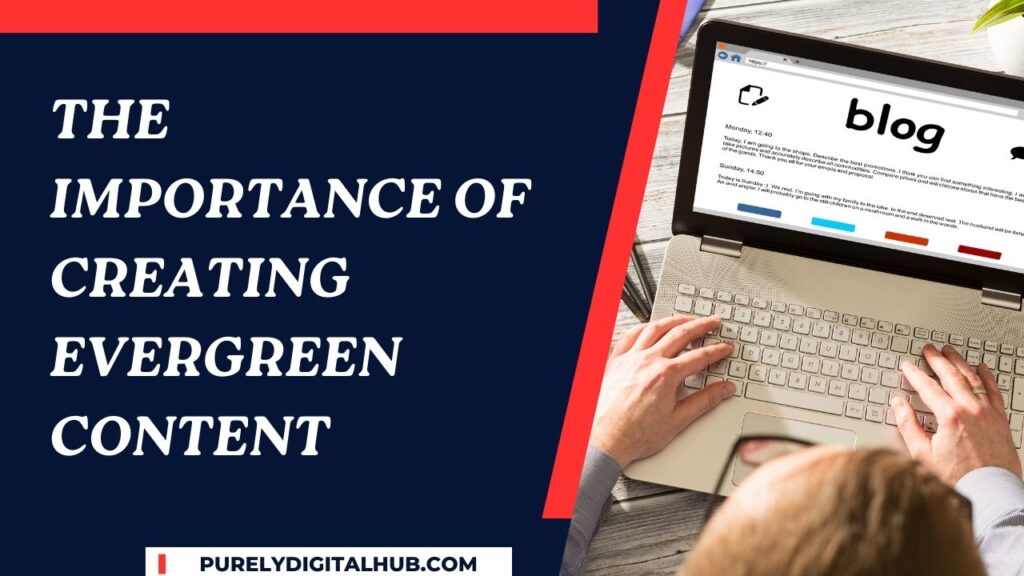In the ever-changing landscape of digital marketing, creating evergreen content is a strategy that stands the test of time. Evergreen content refers to high-quality, relevant content that remains valuable to readers over a long period. Unlike trend-based content, which has a short shelf life, evergreen pieces consistently attract traffic, generate leads, and boost engagement. This guide explores the importance of evergreen content and offers practical tips for creating it effectively.
1. What is Evergreen Content?
Evergreen content is information that remains fresh, relevant, and useful regardless of trends or time. Examples include:
- How-to Guides: Tutorials or step-by-step instructions.
- Listicles: Comprehensive lists, such as “10 Tips for Healthy Eating.”
- FAQs: Addressing common questions in your industry.
- Glossaries: Definitions of industry-specific terms.
| Content Type | Example |
|---|---|
| How-to Guides | “How to Start a Blog” |
| Listicles | “Top 10 Budgeting Apps for 2025” |
| FAQs | “What is SEO and Why Does it Matter?” |
2. The Benefits of Evergreen Content
Evergreen content provides numerous advantages for businesses and content creators:
- Long-Term Traffic: It continues to drive organic traffic long after publication.
- Improved SEO: Search engines prioritize high-quality, relevant content that users frequently visit.
- Lead Generation: Consistently attracts new visitors and converts them into leads or customers.
- Resource Efficiency: Offers a better return on investment compared to time-sensitive content.
3. Boosting SEO with Evergreen Content
Search engines favor evergreen content because it provides lasting value to users. Key SEO benefits include:
- Higher Rankings: Evergreen topics often attract backlinks and sustain higher rankings over time.
- Keyword Optimization: Focus on timeless keywords that users search for regularly.
- Content Refresh Opportunities: Easily update evergreen pieces to keep them optimized.
For example, an article on “How to Save Money on Groceries” can rank for years with minor updates to include new strategies or tools.
4. Enhancing Audience Engagement
Evergreen content engages audiences by addressing their ongoing needs and interests. Benefits include:
- Building Trust: Reliable, informative content establishes your authority in the industry.
- Encouraging Sharing: Timeless pieces are more likely to be shared on social media and referenced by other sites.
- Strengthening Brand Loyalty: Regularly updated evergreen content keeps audiences coming back.
5. Examples of Evergreen Content That Works
Certain types of content are inherently evergreen. Examples include:
- Educational Content: Tutorials, guides, and how-tos.
- Case Studies: Real-world examples of successful strategies.
- Tips and Tricks: Lists of actionable advice.
- Historical Overviews: Explaining the evolution of an industry or concept.
6. How to Create Evergreen Content
To create impactful evergreen content, follow these steps:
- Identify Timeless Topics: Choose subjects that remain relevant regardless of trends. Use tools like Google Trends or AnswerThePublic to identify enduring queries.
- Focus on Quality: Ensure the content is well-researched, detailed, and valuable.
- Optimize for SEO: Use relevant keywords and meta descriptions to enhance visibility.
- Update Regularly: Periodically refresh content to include new developments or insights.
| Step | Action |
| Identify Topics | Use keyword tools to find evergreen ideas |
| Focus on Quality | Conduct thorough research and offer value |
| Optimize for SEO | Target keywords and improve readability |
| Update Regularly | Refresh data and include new examples |
7. Avoiding Pitfalls in Evergreen Content Creation
While evergreen content is valuable, there are common mistakes to avoid:
- Overlooking Updates: Failing to update content diminishes its relevance.
- Ignoring Analytics: Regularly monitor performance to identify improvement areas.
- Overloading Keywords: Focus on readability and user experience rather than keyword stuffing.
8. Measuring the Success of Evergreen Content
Track these metrics to evaluate your evergreen content’s performance:
- Organic Traffic: The number of visitors coming from search engines.
- Engagement Metrics: Time on page, bounce rate, and social shares.
- Conversions: Leads or sales generated from the content.
Regular analysis helps identify opportunities for improvement and ensures sustained performance.
Conclusion
Creating evergreen content is a long-term investment that delivers ongoing value for businesses and audiences alike. By focusing on timeless topics, optimizing for SEO, and updating content regularly, you can build a library of resources that drive traffic, engagement, and conversions. In a digital world where trends fade quickly, evergreen content stands as a reliable and enduring strategy for success.
